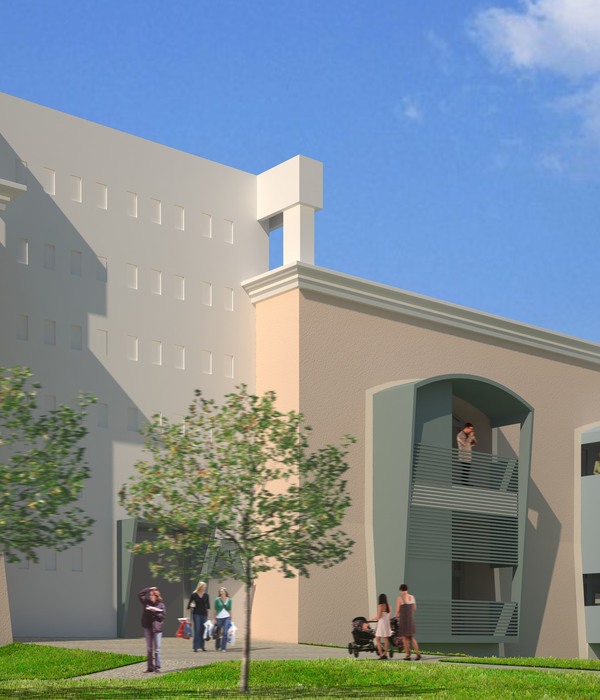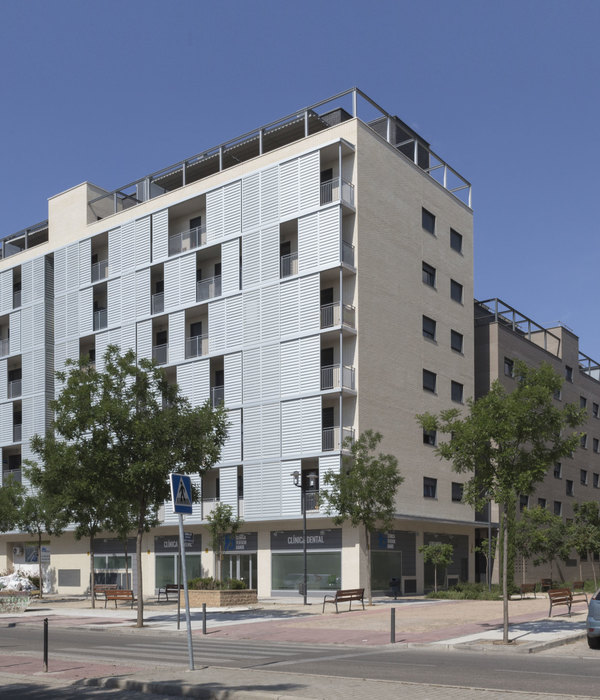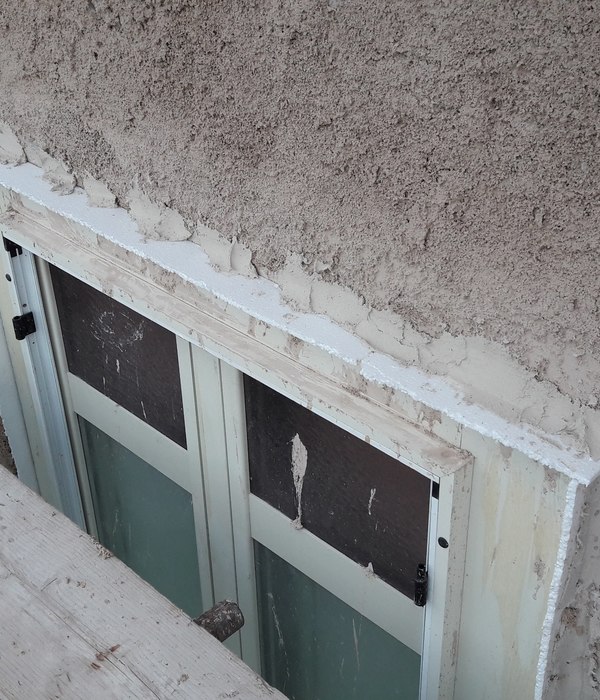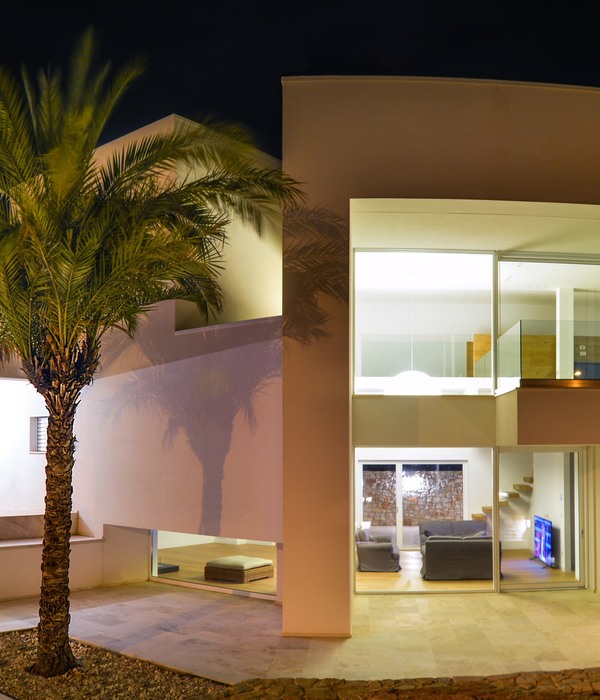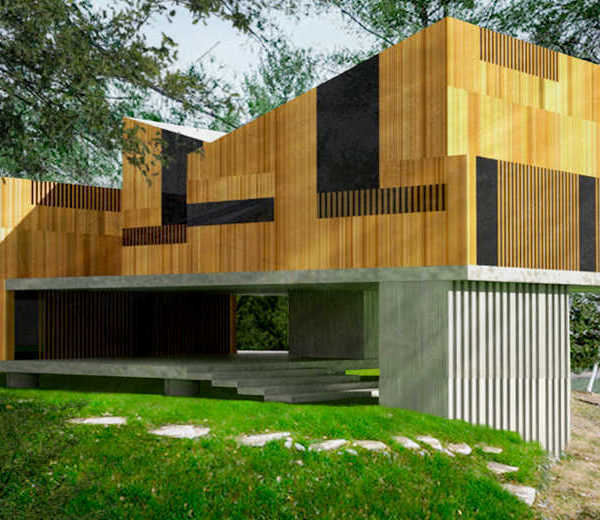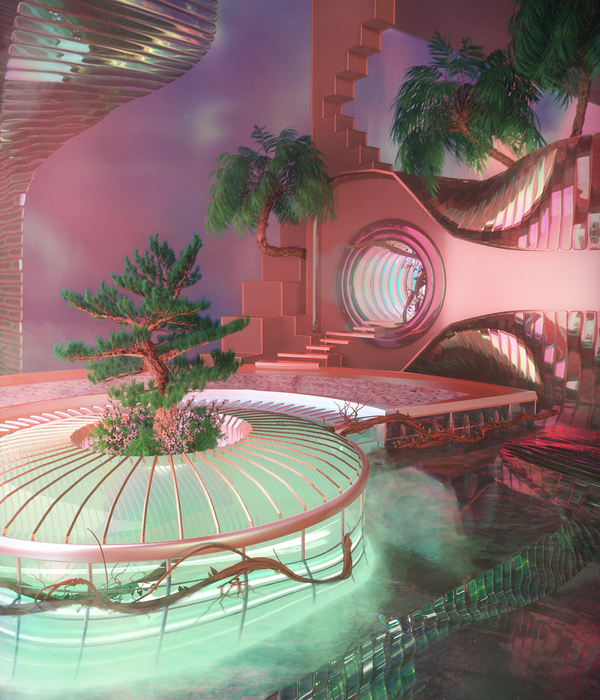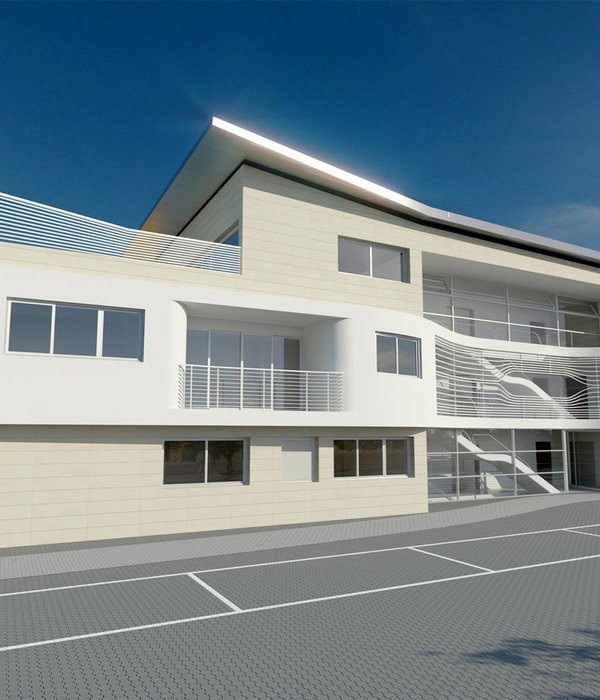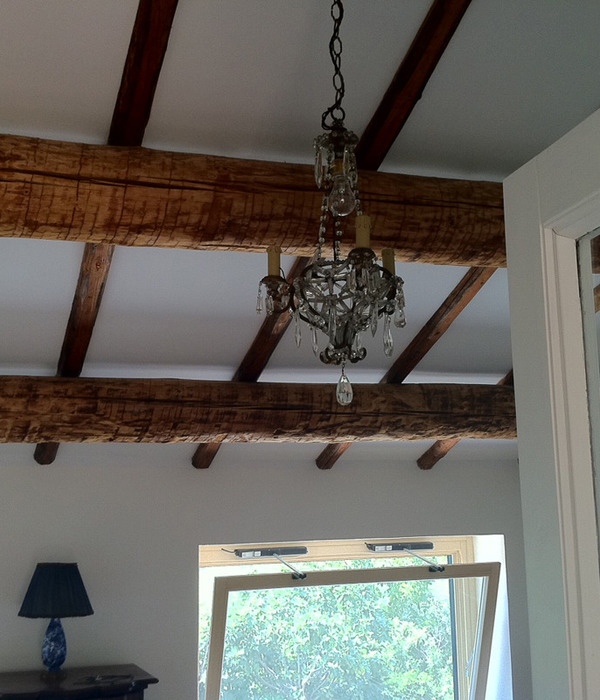任何新建建筑都与环境相关。通常,基地本身会产生影响项目各项决策的条件,而该住宅不属于这种情况。与该地块所在的花园城市相比,其周围环境更多是典型的六十年代住宅区,项目的朝向、有斜角的近乎方形的基地形状、南侧与邻里距离过近以及北侧住宅楼,构成了四个不容易设计的要素。业主夫妇育有两个孩子,希望房屋不需要维护、具有高度私密性、全年与花园保持良好关系、布置合理的工作室及其他日常空间。他们想住在现代的房屋中,对当代日本住宅建筑有一定兴趣。基于这些因素,设计团队明确了历史需要从头书写,更确切地说,设计必须从建筑本身出发,创造新的基地。
No context is irrelevant to a new building. And often the site itself generates conditions affecting the project in almost every decision. This is not the case with this house. The sun, the geometry of the plot -almost square with a chamfer-, a neighbour too close to the south, and a tower of houses to the north, more typical of a residential area of the sixties than of this piece of garden city where the plot is located. Four badly counted inputs. The owners (a couple with two children) wanted a house without maintenance, with a lot of privacy and a good relationship with the garden all year round, a well-placed studio, and a few other usual requirements. And a desire to live in a modern house. And a certain interest in contemporary Japanese domestic architecture. With these determining factors, it was clear to us that history had to be written almost from scratch, or rather from within, with the building itself. A new site had to be created.
▼项目概览,general view © Adrià Goula
基地略低于街道,内部平坦,没有树木。设计的第一步是建立两米高的不透明围墙,将房屋置于偏东位置,充分利用120㎡的占地面积,除了一四季都有阳光照射的西侧,房屋在其他方向均到达建筑控制线。花园在西侧更为宽阔(7.6米),在其余方向的宽度依据规范进行调整(距邻居3米,距街道5-6米)。设计团队在基地北侧种了一些常青树,随着时间推移,它们可以遮挡来自邻近住宅楼的视线。新房屋具有与基地边界平行的四个层次,它们具有相同的中心,如同洋葱一样。从外至内分别为建筑围墙、周边庭院和环绕主体的游廊以及两层楼的混凝土体块。项目初期,房屋面积较大时,游廊是调节气候的过渡空间,具有补充作用,主要功能位于房屋的中心。而后由于预算调整,房屋面积缩小,只有卧室、浴室和楼梯位于主体,公共区域则移至游廊。
The plot was flat, slightly below street level. No trees. The first step was to build an opaque fence as high as possible, about two meters, and place the house off centred to the east, filling the 120m2 of maximum occupation and filling all the building limits except the west, where the sun comes in all year. There is where the perimeter garden becomes wider (7.6m), the rest has variable widths adapted to the regulations (3m to neighbours and between 5 and 6 to the streets). To the north we planted some evergreen trees that, with time, will deprive the view from the neighbouring tower of houses. The new house is structured in four concentric layers parallel to the limits of the plot, like an onion. From outside to inside: the building fence, the perimeter courtyard and a continuous gallery that surrounds the central body, a two-storey concrete block box. In the initial phases of the project, when the house was bigger, the perimeter gallery was an intermediate space, bio climatized, with complementary uses, and all the main pieces were housed in the core of the house. Later, due to budgetary adaptation, the surface was reduced and only the rooms, the bathrooms and the stairs were left in the central body. The common areas were moved to the gallery.
▼项目外观,external view © Adrià Goula
几乎所有的家庭活动都发生在游廊空间,它是一个半开敞走廊,致敬了查尔斯·摩尔设计的穆尔住宅,该住宅提出了回廊与庭院随季节密切变化的关系:夏季,这里通过巨大的滑动墙变成门廊;冬季,建筑拐角的大型窗户勾勒出花园景观,并获得西向采光。与通常情况相反,这座房子的窗户是固定的,活动门是不透明的,使立面和游廊空间根据门窗开合而不断变化。
Almost everything happens in the gallery. It is a veranda, with certain resonances to Charles Moore’s Orinda house, which proposes intense and variable relations (seasonally) with the patio; in summer, through the large sliding walls it becomes a porch; in winter, large windows in the corners offer framed views of the garden and capture solar radiation to the west. Contrary to what is usual, in this house the windows are fixed, and the mobile doors are opaque, a condition that constantly transforms the facade and the gallery, depending on what is open and what is closed.
▼滑动门开合,sliding door opening and closing © Adrià Goula
▼游廊空间设置不同的功能 © Adrià Goula different functions are set in the gallery
▼半开敞走廊,the veranda © Adrià Goula
该项目的游廊空间具有斜屋顶,像丽娜·柏·巴蒂设计的Santa María dos Anjos教堂一样应用采光和干燥系统,包括木结构(柱、梁和屋顶)以及玻璃、铝、木材、镀锌瓦楞板外壳。与游廊的轻盈不同,中央核心体厚重而紧凑,具有较高的热惯性。砖墙和木板裸露在游廊空间,在房间内则被涂刷成白色。
As in the chapel of Santa María dos Anjos by Lina Bo Bardi, the veranda, with its sloping roof, is built with light and dry systems: wooden structure (pillars, beams, and roof) and glass, aluminium, wood and corrugated galvanized sheet enclosures. In contrast to the lightness of the gallery, the central core is massive and compact, with more thermal inertia. The block walls and slabs are left visible in the gallery and painted white in the rooms.
▼客厅,living room © Adrià Goula
▼从客厅望向餐厅,view from living room to dining room © Adrià Goula
▼餐厅,dining room © Adrià Goula
▼厨房,kitchen © Adrià Goula
冬季,中央主体不具备自己的气候系统,游廊对其起到保护和升温作用。混凝土地面有很大的惯性,除了接受太阳直接辐射,还通过空气热泵产生的地热取暖,二楼房间也是如此。夏季,滑动门关闭时,窗户通过屋顶悬挑和反射热量的外窗帘防晒。同时,屋顶倾斜有利于被动通风系统,该系统通过四个隐藏在立面中的管道将热空气排出,这些管道充当小型太阳能烟囱,有助于翻新和促进游廊降温。在设计师与业主初次见面十年后,905住宅经过漫长而激烈的过程终于完工。长久的时间也是该项目的另一大影响因素。
In winter, the veranda shelters and heats the entire central body (bathrooms and bedrooms), which does not have its own climate system (on the ground floor); the concrete floor, with a lot of inertia, apart from receiving direct solar radiation on time, is heated via underfloor heating, as are the rooms on the second floor; generation is by aerothermal heat pump. In summer, when the sliding doors are closed, the windows are protected from the sun by the overhang of the roof and by reflective exterior curtains. At the same time, the inclination of the roof favours, by stratification, a passive ventilation system that evacuates the hot air through four ducts hidden in the facades that work as small solar chimneys, favouring the natural renovation and facilitating the cooling of the veranda. Ten years after the first meeting with the clients, and with a long and intense history in between, house 905 was completed. The long time was another determining tool in the process of the project.
▼细部,details © Adrià Goula
▼平面与立面的灵活使用,flexible changes of plan and elevation © HARQUITECTES
▼平面图,plans © HARQUITECTES
▼立面图,elevations © HARQUITECTES
▼剖面图,sections © HARQUITECTES
{{item.text_origin}}

